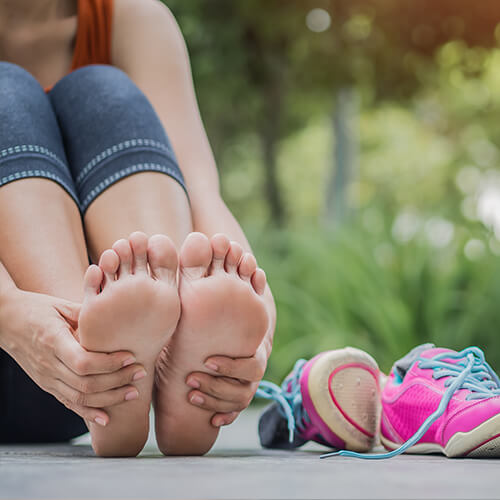PLANTAR FASCIITIS
Click the menu icon below to learn more about other foot and lower leg conditions.
Characteristics of Plantar Fasciitis:
– Inflammation and irritation of the thick fibrous tissue that extends from the heel to the toes; supporting the arch.
– Inflammation and pain is often felt at the beginning of the arch or bottom and inside of the heel. Pain is often worse with the first few steps in the morning or rising after being seated.
– Lasting 4-6 weeks, this is an acute injury. However if left untreated, this condition changes in tissue response, creating compensations and further discomfort resulting in a more chronic condition called Plantar Fasciopathy.
Active Alignment Treatment Options for Plantar Fasciitis:
- Custom Foot Orthotics
- FS6 Compression Sleeve
- Night Splint
- Therapeutic Footwear
- Therapeutic Massage Ball
- Resistance Bands
- Stretching with targeted exercises for intrinsic arch strength including videos
The difference between Plantar Fasciitis and Heel Spur/Heel Pad Syndrome:
1) Location of the pain: Heel Pad Syndrome or heel spur pain is typically felt in the center, perimeter and posterior heel; Plantar Fascia pain is on the inside of the foot where the heel and arch meet.
2) When the pain happens: Plantar Fasciitis generally is noticeable first thing in the morning and upon rising, but tapers off. Heel Pad Syndrome or heel spur pain is tender when weight bearing with progressive worsening through the day.
3) How long the discomfort lasts: Plantar Fasciitis is acute or short term in nature and can resolve relatively quickly with proper treatments, however, Heel Pad Syndrome can linger past the 8 week mark and not respond to Plantar Fascia management techniques.
Common causes for heel pain:
- Poor foot mechanics (over pronation)
- Weight gain
- Increase or change in activity levels
- Improper footwear
- Aging
- Trauma
- Uneven ground conditions (sand, gravel, grass)

